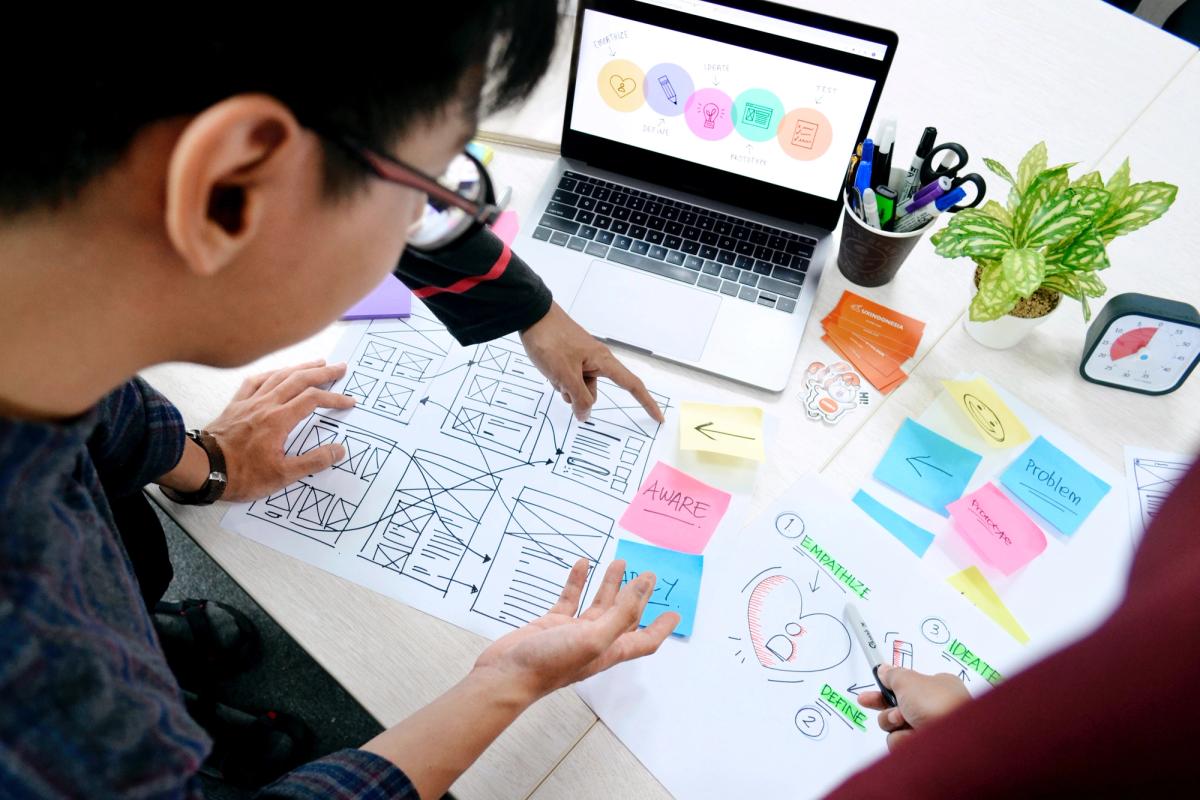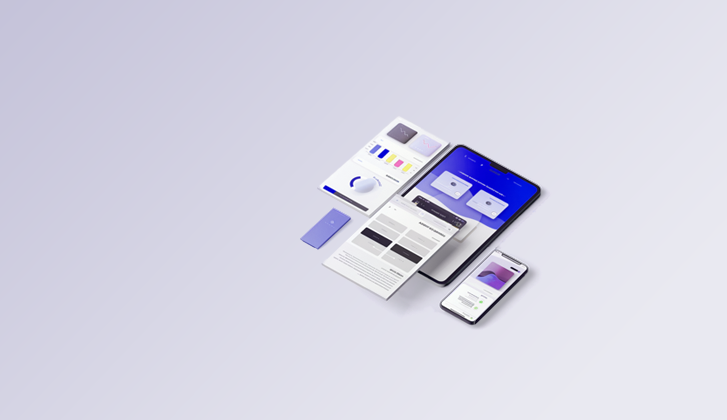What is Experience Design, and Why It Matters
Did you know that 68% of people tend to give up on a brand if they think the brand doesn’t care about them?
Nowadays it gets harder and harder to build trust and connect with your customers. You can’t expect that it will happen from a single interaction. It’s something that needs to be built up over time.
As the user journey becomes increasingly multifaceted, it’s crucial to create experiences that are meaningful and consistently reinforce trust across multiple interactions, sessions and platforms.
Experience design plays a key role in this process. It’s about creating a seamless, engaging journey across all touchpoints, ensuring that every interaction - no matter how small - contributes to a positive and long-lasting impression.
But what is experience design exactly? Is it the same as UX design or design thinking? Not quite.
Read on to find out.
Table of Contents
- What is Experience Design?
- Experience Design vs User Experience Design
- Why is Experience Design Important?
- Experience Design Process
- How to Design Impactful Experiences
- In Conclusion
What is Experience Design?
Experience design is exactly what its name suggests. It’s the practice of designing every aspect of a user's experience with products, services, and processes to ensure they're meaningful, engaging, and resonant
It's not just about the product itself, but the entire customer journey - from discovering to purchasing, using the product or service, after-sales support, onboarding, offboarding, and so on.
Experience design considers all possible touchpoints - both physical and digital. It draws in on people’s feelings, needs, motivations, and circumstances to build deep emotional connections across every step.
Experience Design vs User Experience Design
While experience design and user experience design might be closely linked, they are not the same thing. They have different goals and areas of focus.
User experience (UX) is one component of experience design. UX design is concerned with the user's direct interaction with a product, focusing on making these interactions as seamless, intuitive, and effective as possible. It ensures that by using the product the user can achieve their goals efficiently.
Experience design (XD), on the other hand, casts a wider net. It considers not just the design and usability of the product itself, but also how it's marketed, the overall brand image, customer service, and every other aspect that shapes the user's complete experience with the brand.
Why is Experience Design Important?
Experience design can be a key differentiator between your business and a competitor. Designing experiences that stay long in your customers’ minds can be the one thing that makes you stand out in the market.
XD can help you connect with your customers on a personal level and promote brand loyalty. This is why it plays a key role in shaping the relationship between your brand and your customers.
The goal is to design the entire customer journey from start to finish in a way that every interaction has a purpose. This involves anticipating the user’s needs and creating moments of delight that enhance the overall perception and enjoyment of your brand.
What does this mean for your business?
The impact of experience design can be difficult to quantify and tie directly to business goals. It’s a common challenge: McKinsey & Company reports that over half of companies struggle to set targets and measure the output of their design teams.
This often leads to design initiatives being pushed back or not prioritised enough. Yet, the same report by McKinsey found that design-centric companies outperformed their competitors twofold.
So a well-thought-out design can help increase revenue and market share by improving customer experience, promoting brand loyalty and innovating through talking and listening to the customer.
But here’s the key: this isn’t just in the hands of your design team. You need to integrate design thinking deep into your business strategy. Make design everyone’s business, cutting across all departments - from marketing and sales to development and quality assurance.
Experience Design Process

The experience design process follows a similar framework to other disciplines like UX design and design thinking. That process might look slightly different for different teams, depending on what model they choose to follow and their specific workflow.
Although you might find them under different names, in general, there are a few stages that teams go through when designing an experience:
1. Exploration
This stage is all about understanding the challenge at hand. The team gets together to talk about and define the problem they’re solving, setting the stage for the next steps.
2. Research
To empathise with users, you need to better understand their goals, pains, motivations and behaviour. While some assumptions can be made at the beginning, you need to move from ‘gut feeling’ to validated learning.
For this, teams use a variety of tools and frameworks - empathy maps, one-on-one interviews, competitor analysis and surveys.
3. Ideation
During the ideation stage, the focus is turned to transforming research findings into actionable ideas. The team will synthesise all of the findings and shape the big idea into an actionable project.
Here at All Front, we usually use moderated brainstorming and industry-specific storyboards to help us during this stage.
4. Prototyping
The team creates initial wireframes and low-fidelity sketches to materialise the solution and get a better idea of how it would look, feel and function. These are used to narrow down the options and choose the best one as they require less time and resources.
As the design takes shape, the sketches are refined and developed into high-fidelity prototypes that are a closer representation of the final product.
5. Test & Iterate
The prototypes are tested in real-world scenarios with stakeholders and/or a selected group of users to evaluate their performance and collect valuable feedback.
Based on the feedback, the design is further improved, often going through multiple iterations as it moves closer to a successful solution.
How to Design Impactful Experiences
- Focus on human-centric design
Adopting a human-centric design means crafting designs with a deep understanding and appreciation of human needs, behaviours, and emotions. Design is made from humans for humans.
It involves empathy, where designers put themselves in the shoes of the users, understanding their needs, challenges, motivations, and the context of their interaction with a brand.
It's about creating a bridge between technology and human experience, ensuring that every interaction feels intuitive, responsive, and enjoyable.
- It’s about more than ‘the product’
When you’re designing an experience, it’s no longer just about the product. It’s about the complete customer journey.
Experience design is a holistic approach where details matter. It's the thoughtful touches like a personalised recommendation, quick and smooth checkout process, or customer support that went above and beyond. Things like this can leave a lasting impression.
Apple excels in this aspect. When you buy an Apple product, it’s not just about the device - it's about the unboxing experience, the seamless integration with other Apple products, and the after-sales support.
- Strike a balance between aesthetics and usability
The aesthetics of a product are often the first interaction a user has with a brand. The visual appeal can grab attention, but how seamless and useful the product is is what makes people stay.
What good does a beautifully designed restaurant landing page do if visitors can’t easily find the menu or book a table? When users can’t navigate a product easily or achieve their goals efficiently, the overall experience falls apart.
The usability of a product is often a reflection of how good the user experience is. It's about creating a product that users can navigate without having to think twice.
Effective design uses colour, typography, and spacing not just to captivate but also to communicate functionality and hierarchy, making the product not only aesthetically pleasing but also intuitive.
- Use emotional appeal and storytelling
Desirability is another key element in creating experiences that people crave. It focuses on the emotional aspects of design. It's what draws users in and creates a deep connection. This can be achieved through aesthetics, branding, and creating a story that customers want to be a part of.
This is where storytelling comes in. Do you know one of the reasons people are so eager to buy every new Apple product? The company relies heavily on storytelling and emotional appeal in their marketing.
Their promotional campaigns tell a story that resonates, focusing on how the product fits into and improves the user's life, rather than just listing features. They also include examples of people successfully using their products in different scenarios.
- Design for all
Inclusivity in design means creating experiences that are accessible and enjoyable for people with a wide range of abilities, backgrounds and circumstances.
Think of your design as a universal language. Every element should reflect a deep understanding and consideration for diverse user needs.
- Test and iterate continuously
The design process doesn’t end with the launch. Continuous testing, gathering user feedback, and iterating based on that feedback is essential to refine and improve the overall experience for every solution you put out.
The Lean methodology has become synonymous with startup culture. It’s because startups and small businesses are much better at releasing a working version of their product early to test and collect feedback rather than investing too heavily into perfecting a product that might fail.
But this approach can be applied to businesses of any size and for any solution, whether that’s a digital or physical product, service, marketing campaign, etc. The lean approach allows for adapting to user needs and market changes, ensuring the design remains relevant and practical.
In Conclusion
In a world where people have way too many options, creating an impactful experience can be a make-or-break for your business. Customers are expecting more personalised experiences. And if they don’t get that, they will be quick to leave.
That’s where experience design comes in. By focusing on thoughtful, cohesive experience design, you can turn casual browsers into loyal brand advocates.
Customers are constantly being bombarded with brand messages, ads, new products, offers, and so on. This means that you need to work harder to leave an impression with a series of small, but memorable interactions that add up to a great overall experience.




